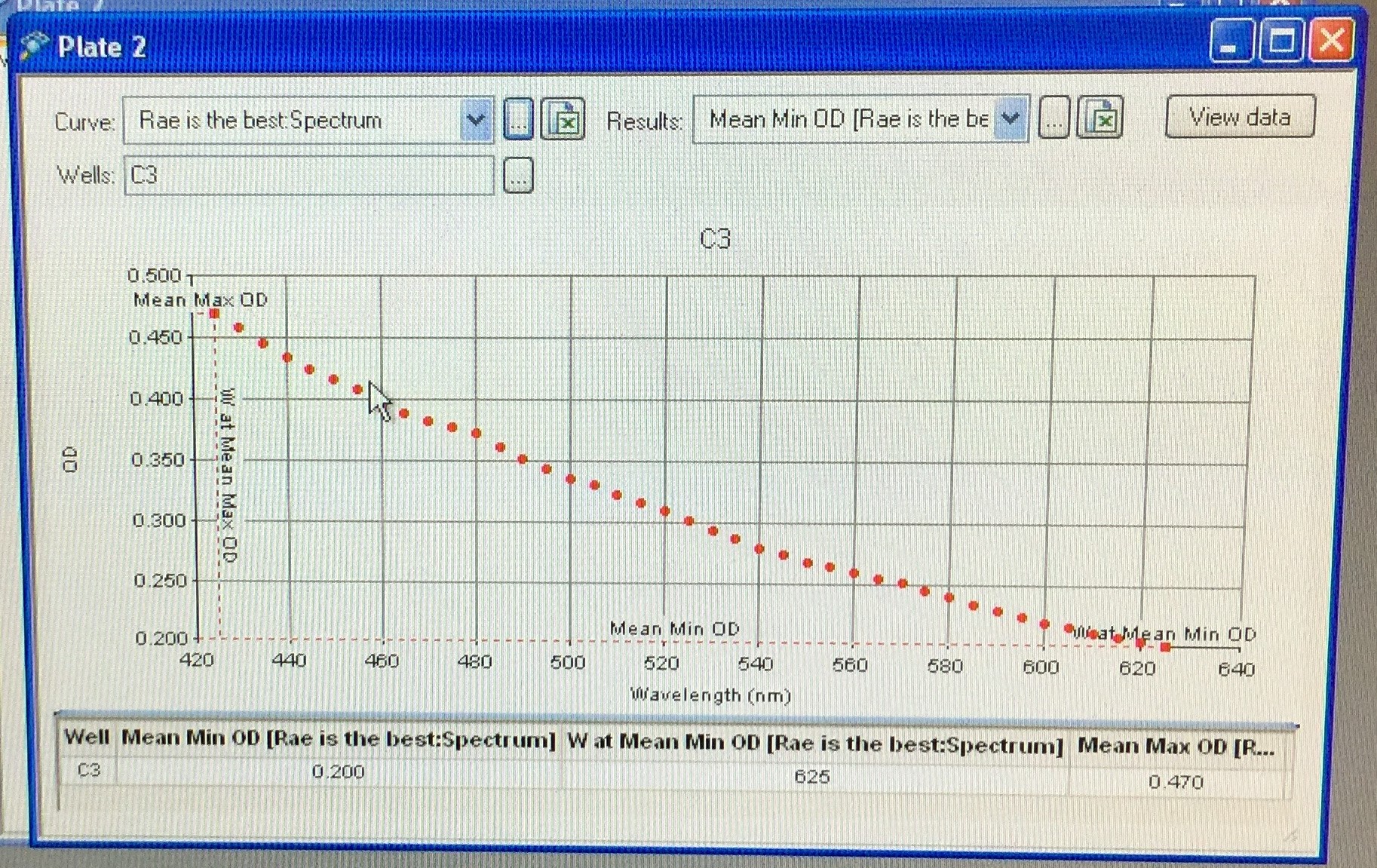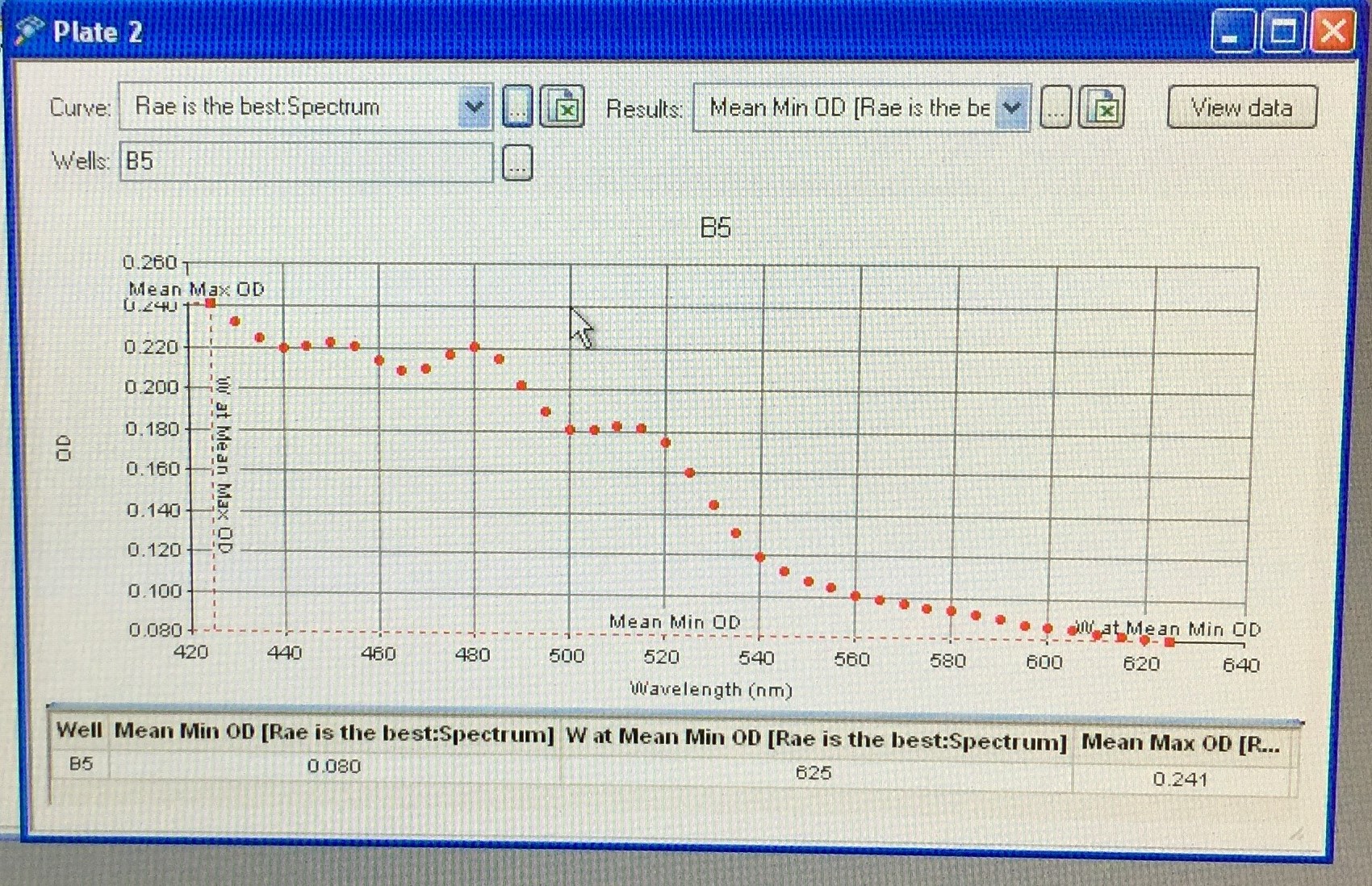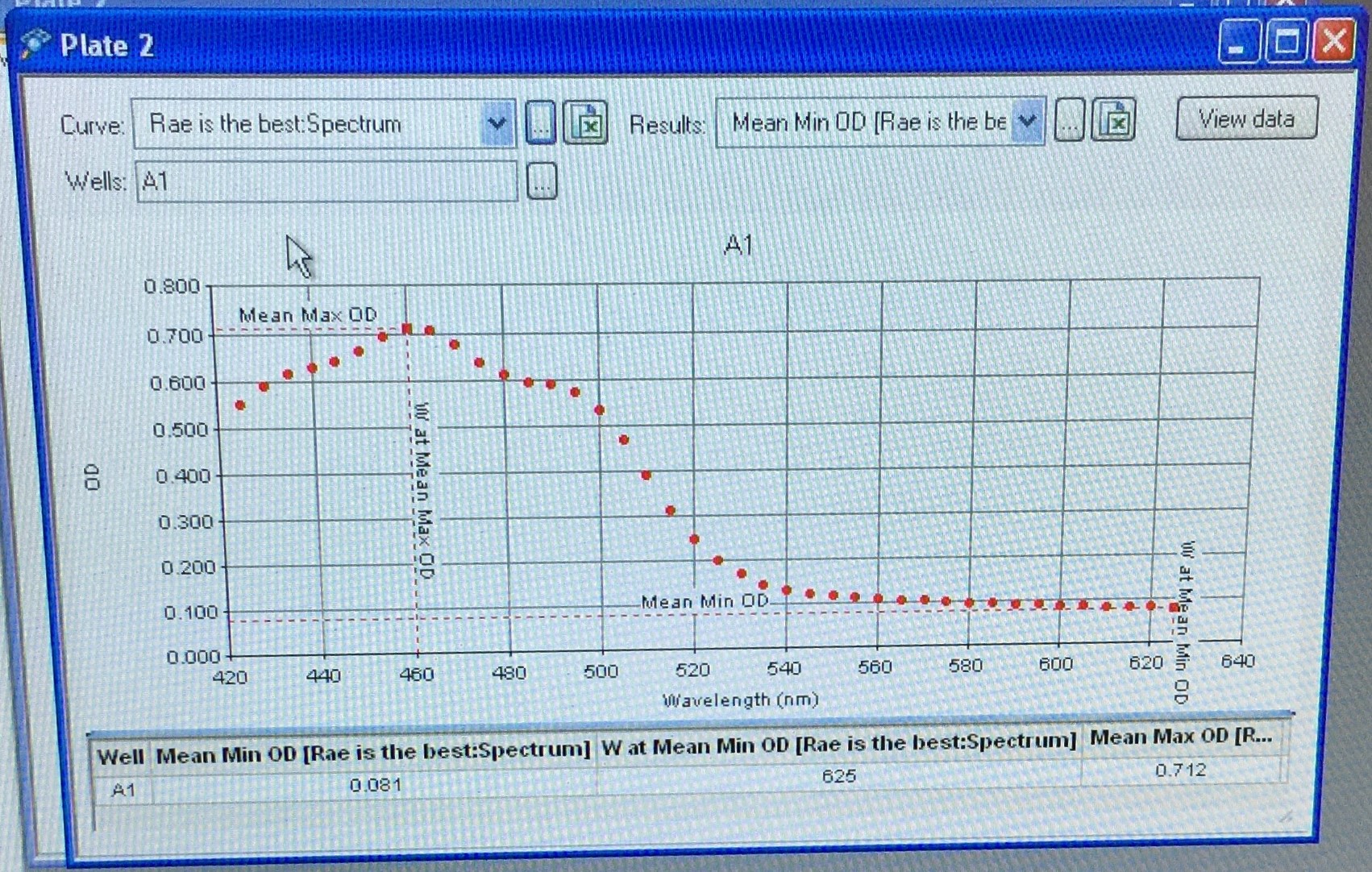Bioproduction: Lycopene and Beta-carotene Production
March 14, 2019

In this week's lab, we looked at how different biological conditions and enymes can result in different bioproduction efficiencies. We made lycopene with the pAC-LYC and pAC-LYCipi plasmids, and we made beta-carotene with pAC-BETAipi. The pAC-LYC plasmid contains crtE, crtB, crtI. crtE helps make GGPP, which is then convert to phytoene by crtB, which is then converted to lycopene by crtI. The pAC-LYCipi plasmid includes the idi gene, which assists with making more GGPP. pAC-BETAipi adds the crtY gene, which converts lycopene to beta-carotene. The enzyme crtZ or crtR will convert beta-carotene to zeaxanthin. Based on the carotenoid biosynthesis pathway, lycopene is capable of being degraded into other compounds without the use of enzymes, so we expect pAC-BETAipi to produce the most pigment, then pAC-LYCipi, and finally pAC-LYC. We were able to see this result mildly, although it appears media (2YT and fructose) additions increase production more strongly. We also had some issues with debris in the some of the lycopene production, which may account for higher than expected background.




